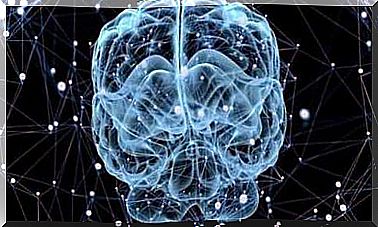Chameleon Effect: What Is It?

There is a wide variety of psychological syndromes and disorders, many of which are named after a metaphor that explains their effect. The syndrome of Peter Pan, of Jerusalem, of Othello, the Ben Franklin effect, Mandela… But a very particular one is the so-called chameleon effect.
Just the chameleons, those small scaled reptiles with big colored eyes and extensible tongues. They are famous for one particular feature, that of changing the color of the skin. Despite this peculiarity, the popular belief that these animals camouflage themselves is not entirely correct. Likewise, the chameleon effect in humans is not representative of people changing color, but of how they change it.
Chameleons that change color
Only some species of chameleons are able to change color. These reptiles are colorless and the change in hue does not always occur in accordance with the surrounding environment. In fact, most of the variations are due to a physiological condition: chameleons react to temperatures and to changes in the hour.
The color can also change on other occasions due to certain psychological factors. For example, in the presence of an opponent or a female specimen. These reptiles can also change color during battle, indicating whether they are scared or furious. The different color, therefore, is nothing more than a means of communication between chameleons.

People who change color
In one of Woody Allen’s films, Zelig, a curious character appears. Played by the director himself, the main character Leonard Zelig makes an appearance in several scenes interacting with various people. Up to now everything is normal, except that Zelig takes on a different aspect every time. When he is with people of color, his complexion and tone of voice change. When he is in the presence of Jews, he grows beards and sideburns. When she finds herself with overweight people, her weight also increases.
This strange case is analyzed in the film by Doctor Eudora Fletcher, played by Mia Farrow, who diagnoses Zelig with an extreme case of insecurity that leads him to disguise himself among people, adapting his appearance from time to time in order to be accepted. Zelig has the supernatural ability to change his appearance to adapt to the environment he is in, and for this he is known as a chameleon man. After lying about reading a book, Moby Dick , in order to feel included, the need for acceptance becomes a physical and psychological problem.

As is evident, Woody Allen’s film is a parody in its attempt to take a caricature to the extreme. It shows an unreal situation but that can help us better understand what the chameleon effect consists of.
This syndrome is also called emotional contagion and consists of the tendency to experience and internalize emotions similar to those we observe and, in the same way, to condition those of others. It is a process in which the person is the victim of the influence of others, but at the same time influences other people or groups with their emotions and behaviors.
The chameleon effect
The term chameleon effect defines a reality in which the subject almost acts as a mirror for other people. He is therefore led to imitate the emotions of others or at least those which he unconsciously believes others to manifest. The effect is not limited to this: postures and facial expressions, language, tone, accent and vocabulary are also imitated.
Our natural reaction when someone has a fit of laughter is to laugh. When we are surrounded by people with different accents than ours, it doesn’t take long for our cadence to change. If we are sitting next to a person with crossed legs, we will probably end up sitting the same way. Although this effect does not always occur, we tend to do it on various occasions consciously or not.
Function of the chameleon effect
The function of the chameleon effect, from an evolutionary perspective, was intuited at the time by Charles Darwin. Our state of mind is partly determined by the gestures we make. At the same time, we are also influenced by the signals emitted by others. All of this brings greater personal well-being and allows us to integrate better into a group. Without realizing it, some small signals from others tell us what to do and our mirror neurons cause us to mimic them.
Probably each of us has a Zelig in him. When we are with other people, we adapt to them to achieve the same emotional state. Emotions are like viruses, they spread around us. We are programmed to infect and be infected by emotions from the very moment we are born. If we experience positive emotions, others will feel them too. If, on the other hand, we experience negative emotions, others will too. Although this process is largely unconscious, we ourselves can take the first step with our positive emotions.









